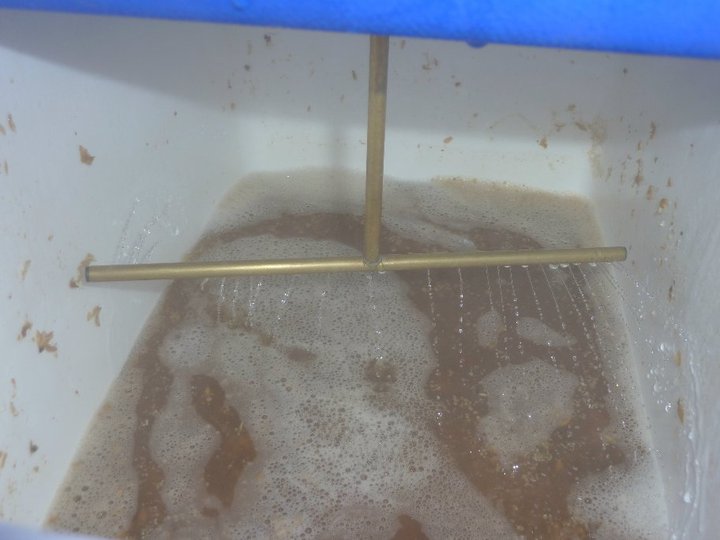Sparging
Sparging is the term used to describe rinsing the grain bed to extract as much of the sugar left in the mash as possible, the consequence of this sparge also increases the amount of wort collected from the mash. The liquor used in the mash is usually in ratio to the amount of grain used in the recipe, somewhere along the lines of 2.5 – 3.5 litres of water per kilogram of grain, this amount of liquor is then run off whilst the sparge is performed to reach the level of wort for the brew length.
Sparge liquor is heated to around 75 – 80°C this increases the solubility of the sugars in the wort and makes the whole mash less viscous which aids the run off. If the wort is run off too quickly the grain bed will compact to much and the sparge liquor won’t run through the grain bed resulting in a “stuck mash”. Running off and sparging slowly will keep everything flowing smoothly.
There are two main methods of sparging available to the homebrewer, one is fly or continuous sparging and the other is batch sparging both have their own advantages and disadvantages.
Fly Sparging

As mentioned before the extract of sugars from the mash is most often highest with fly sparging, this is why almost all commercial breweries use this method. The home brewer though may not or need not be as concerned with the extraction efficiency and more with time and the amount and cost of equipment as this method of sparging takes more of both. A method of sparging available to the homebrewer who doesn’t have the same concerns as their commercial counterparts is batch sparging.
Bach Sparging
Batch sparging is simpler and requires less equipment than the continuous version. The process involves running off the mash and recirculating as before to attain a clear run off, then collecting these first runnings until the mash tun is completely emptied of wort. The outlet is then closed and the mash tun recharged with sparge liquor to attain the required amount of wort for the brew length. The whole mash and sparge liquor are vigorously stirred to aid the extraction and rinsing of sugars and left to settle for around 15 minutes. The runoff process is then restarted with recirculation as before to collect the second runnings, the mash tun is emptied again and both runnings combined. The speed of the batch sparge is a definite advantage and the only real downside is a small loss in extraction, this might sound bad but on a home brew scale it relates to a relatively small amount of grain being added to the recipe.
